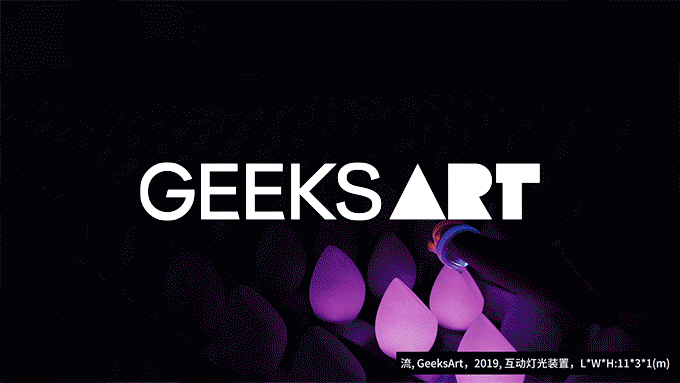Shaping an editable block-style commercial aesthetics through a mindset focused on lightweight thinking.
「限制与可能」主题展览空间设计
Designing the exhibition space with the theme “Restriction & Probability”.
限制,是设计存在的先决和必备条件,也是设计师发挥想象力和创造力的支点;可能,是设计存在的目的和结果,是设计师绕过诸多障碍,找到的完美而唯一的解。
” Restriction ” are the foundational elements in design, serving as both the prerequisites and catalysts for unleashing imagination and creativity. Conversely, ” Probability ” represent the ultimate purpose and outcomes of design, the ingenious and sole solution that designers discover while navigating through various challenges
▲展览入口
「限制与可能」主题展览空间设计,正如题目所言,意思是面临着众多限制和各种可能。展览由国内商业零售空间设计领域垂直媒体「Hi设计」与德国杜塞尔多夫上海展览公司联合主办。我们在过往的设计经验和海量视野中搜索着,试图再一次带着镣铐起舞,找到满足限制的恰当而合理的设计解决方案。
The ” Restriction & Probability ” theme exhibition space design, as the theme suggests, encounters multiple limitations and diverse prospects. It is jointly hosted by “Hi Design”, a prominent vertical media outlet in the field of commercial retail space design in China, and a German exhibition company based in Düsseldorf. Drawing from our extensive design experience and a broad perspective, we endeavor to once again embrace constraints and devise design solutions that aptly and logically accommodate these restrictions.
▲展览出口
限制——多因素限定下的展场空间设计
Restriction —— Designing within Multifaceted Constraints
展览空间位于上海浦东新国际展览中心的一个400平米的方形地块中。展览时间只有3天,搭建时间只有2天。需要满足20家不同独立设计机构的展示需求,并在预算有限的前提下,方便布展和撤展时的操作,减少材料的使用和消耗,满足可持续设计理念。
The exhibition space occupies a 400-square-meter square plot at the Shanghai Pudong New International Exhibition Center. The exhibition lasts for only 3 days, with a setup window of merely 2 days. It must cater to the display requirements of 20 different independent design agencies, all within a budgetary framework. Additionally, the design must facilitate swift setup and teardown, minimize material consumption and waste, and align with the principles of sustainable design.
展览的副题是“商业空间轻量化建造的灵感与线索”,这为设计思路提供了一个关键词:轻量化。「轻量化」的概念最先起源于汽车领域的赛车运动。轻,带来了速度的提升和灵活的操控性。轻量化的目标是在给定的边界条件下,实现整体方案「自重」的最小化,同时满足一定的寿命和可靠性要求。为了实现这个目标,需要设计出轻质的构造,选用合适的的材料,巧妙的连接节点。尽可能准确的设计与可场外机加工实现的构件,也为现场搭建与撤场抢出时间除了这些,还要考虑到成本造价与品牌气质的协调统一等。
The exhibition’s subtitle, “Inspiration and Clues for Lightweight Construction of Retail Spaces,” serves as a guiding keyword for our design approach: lightweight. The concept of “lightweight” originally emerged from the realm of automotive racing, where lightness translated to increased speed and enhanced maneuverability. Lightweight design aims to minimize the overall weight of a solution within predefined constraints, all while meeting specific durability and reliability criteria. Achieving this goal requires designing lightweight structures, choosing materials that are both strong and lightweight, and developing innovative connections. Precisely designing components for off-site fabrication is crucial, as this significantly streamlines the on-site construction and dismantling process, saving time and resources.Additionally, considerations regarding cost-effectiveness and brand identity harmonization are integral.
可能——用轻量化思维融入设计策略
Probability ——Infusing Lightweight Thinking into Design Strategy
近年来随着线上电商的冲击,「轻量化」成为线下商业场景设计的一个趋势,未来以北的过往项目中也经常为品牌客户提供模块化、可扩展、可移动的设计方案,在结构、材料、工艺上实现物理空间的灵活可变。与此同时,强化线下体验和社交传播的趋势也在实体零售品牌中凸显。设计解决方案不仅停留在可以触碰的实体空间中,也在服务体验、心理情感等不可触碰的软性品质中发挥重要作用。
In recent years, with the advent of online e-commerce, “lightweight” has emerged as a prevailing trend in the design of offline commercial spaces. In our previous projects, we have frequently offered brand clients modular, scalable, and mobile design solutions. These solutions empower flexibility and adaptability in physical spaces, spanning structure, materials, and processes. Simultaneously, the drive to enhance offline experiences and leverage social engagement trends within physical retail brands has become more pronounced. Design solutions no longer confine themselves to the tangible physical space; they play a pivotal role in shaping service experiences, evoking psychological emotions, and encompassing other intangible qualities.
▲展览序言
此次展览空间的设计策略也由此出发,希望在展陈空间的物质层面上彰显轻量化的主题,满足不同参展机构对实物类和图文类展品的展示需求。此外,也在非物质层面上,与参观者建立充满趣味、触发传播的互动关系。
The design strategy for this exhibition space emanates from these evolving dynamics. We aspire to embody the theme of lightweight in the material aspects of the exhibition space, catering to the display needs of diverse participating organizations, encompassing physical and graphical exhibits. Furthermore, we seek to cultivate interactive relationships with visitors, fostering engagement and facilitating communication. Our approach transcends the tangible realm, venturing into the intangible facets of the visitor experience.
概念——创建具有面对面真实社交感的MINI街区
Concept——Creating an authentic face-to-face social experience in a MINI block
日本当代著名建筑师芦原义信在著作《街道的美学》中曾提出,“街道是城市故事的发生地,承载着人们最本真的生活方式,散步、聊天、聚集、运动、交易等。”在邻里关系日渐冷漠,人们每天都面对着大小屏幕,靠打字和表情包交流的时代,线下面对面的真实交流显得格外宝贵。未来以北试图创造一个街区场域,在这里,人看人,人看展,都能成为一种风景。
Renowned contemporary Japanese architect Yoshinobu Ashihara once stated in his work “The Aesthetics of Streets,” “Streets are where urban stories unfold, carrying people’s most genuine ways of life, such as walking, chatting, gathering, exercising, and trading.” In an era where neighborhood relationships are growing distant, and people face screens of various sizes every day, relying on typing and emojis for communication, offline face-to-face interaction becomes exceptionally valuable. Future North aims to establish a block-like environment where people, individuals, and exhibitions can all become part of the scenery.
脚手架作为线性型材,迅速搭建出街区的基本结构形式,并结合大面积的板材,海洋板、阳光板、网格布等面材,作为街区中起到分隔和限定区域的墙面。
Scaffolding, as a linear material, swiftly assembles the fundamental structural framework of the block. Coupled with extensive materials such as marine boards, sunlight boards, mesh fabric, and others, it functions as walls within the block, demarcating and defining different zones.
在整个展场中,一个独立而开放的MINI街区概念呈现出来。既有围合感,也有通透性,吸引着从不同方位迎面而来的参观者走进来一探究竟。
Across the entire exhibition space, an independent yet open concept of a MINI block is presented. It offers both enclosure and transparency, beckoning visitors from various directions to step inside and explore.
呈现——展馆里的Citywalk,打造可编辑的场景美学
Presentation——Creating a Citywalk within the exhibition hall: Crafting an Editable Scene Aesthetics
MINI街区通过视觉层次的构建提供体验序列,空间布局、材料质感、色彩搭配都在场域的营造中,为人们创造着美好的感受与联想、情感与回忆。
The MINI block, through the construction of visual layers, spatial layout, material textures, and color combinations, offers an experiential sequence that contributes to the creation of positive feelings, associations, emotions, and memories for visitors.
入口处以开放的姿态迎接观者的到来,展览主视觉、关键词、前言随着脚步的移动依次展开。展览空间内所用的材料小样规整地呈现在墙面,板材、管材、连接件,这些都是在商业空间轻量化的议题下可以探索的材料维度。
At the entrance, visitors are greeted with an open and welcoming approach. The exhibition’s key visual elements, keywords, and introductory messages unfold step by step as one progresses. Samples of materials used in the exhibition space are neatly displayed on the walls, showcasing materials like panels, pipes, and connectors, all of which are dimensions explored within the context of lightweight construction in commercial spaces.
街区中心是一个广场,由一圈顶部的主视觉横幅进行限定。地面上木托架搭建的阶梯可以供人们休息并举办沙龙活动。「兵乓球台」成为广场的另一个互动中心,它也是参展机构SLT带来的可折叠白板。
The heart of the block is a central square defined by a prominent visual banner. On the ground, stairs constructed on wooden racks provide a place for people to rest and host salon activities. The ‘Ping Pong Table’ serves as a focal point for interaction within the square, also unfolding into a whiteboard brought by the exhibitor, SLT.
由中心广场向外辐射,四周是散落的不同展位。每个展位的视线都可以延伸到街巷的不同位置,通达的视线不仅具有领域感,也便于人的停留和活动,私密与开放在这里彼此穿插。
Radiating outward from the central square are various exhibition booths scattered around. Each booth’s line of sight can extend to different locations within the streets and alleys, providing a sense of territory and facilitating visitors’ pauses and activities, where privacy and openness coexist.
内部秩序的构建遵循动线逻辑,参观者可以在一条暗藏的路径中不自觉地逛完每个展位。这得益于立面的半开放式设计,特意留出的窗洞满足了人们的窥探心理,也让彼此展位之间相互渗透。展品都依据其特质被安排在了最合适的位置,与动线完美贴合。
The internal organization follows the logic of movement lines. Visitors can naturally explore each booth along a hidden path, thanks to the semi-open design of the facades and strategically placed window openings that cater to curiosity and allow interaction between booths. The placement of exhibits aligns seamlessly with the movement patterns.
看似紧凑的布局,却是步行的最佳尺度。绿植营造了街巷中的景观小品。灯管与射灯沿着脚手架的横纵走向,丰富了虚实空间的层次。小而精的场域内,让街巷的每一个构成要素,比例和尺度、展位与动线、观众与展品之间都能自洽相融,创造并容纳展览期间的各种偶发事件和行为。
Despite the seemingly compact layout, it offers an ideal walking scale. Greenery adds to the ambiance, creating picturesque elements within the streets and alleys. Light tubes and spotlights along the scaffolding’s horizontal and vertical directions enhance the layering of virtual and real spaces. In this small yet finely-tuned space, every element, including proportions, scales, booth placements, movement patterns, and the interaction between visitors and exhibits, harmoniously coexists, facilitating various spontaneous events and behaviors during the exhibition.
街区美学的构建离不开所有展陈道具的色彩与质感,脚手架的金属光泽和半透明的白色界面形成了空间的第一个视觉层次。海洋板、蜂窝纸板、木托架、秸秆砖等原木色质感形成了第二个视觉主体。低饱和度的展厅环境和弱对比的展览空间背景突显了展品的存在,整体色调和材料的节制使用,为展览空间特色的营造创造了机会。
The construction of street aesthetics hinges on the colors and textures of all exhibition props. The metallic sheen of the scaffolding and the semi-translucent white interface form the primary visual layer of the space. Meanwhile, wood-grain textures like marine boards, honeycomb cardboard, wooden racks, and straw bricks constitute the secondary visual theme. The subdued color palette of the exhibition hall environment and the understated contrast in the exhibition space background accentuate the presence of exhibits, allowing for the creation of a distinctive ambiance within the exhibition space.
在商业化意味日趋强烈的当下,展览空间的设计不只是需要注重物理化空间的建造,也需要在情感和精神层面给予参观者以人文关怀。结合宏观的行业环境与社会公共情绪,创造符合展览主题,满足展商与观众互动,具有多样化、模块化和更有社交属性和人情味的MINI街区,在可持续的全球议题下,这种形式的展览空间设计概念也将成为未来商业展陈的趋势。
In the current landscape, where commercialization is on the rise, the design of exhibition spaces requires more than just focusing on the physical aspects of space construction. It also necessitates providing visitors with a sense of humanistic care on an emotional and spiritual level. By aligning with the broader industry context and the prevailing public sentiment, the creation of a MINI block that aligns with the exhibition’s theme, facilitates interactions between exhibitors and visitors, offers diversity, modularity, and possesses social attributes and a personal touch, all within the framework of sustainable global themes, is likely to emerge as a significant trend in the future of commercial displays.
▲展览平面图
项目信息——
项目名称 | 「限制与可能-商业空间轻量化建造的灵感与线索」主题展
主办方 | Hi设计 、杜塞尔多夫(上海)展览公司
项目地点 | 上海浦东新国际博览中心W5
项目面积 |400平方米
设计时间 |2023年10月-11月
展览设计 | 未来以北
平面视觉 | 297studio
空间摄影 | 杨森
相关材料 | 镀锌管脚手架、海洋板、秸秆砖、木托架、周转箱、网格布、写真布、蜂窝纸板
Project Information——
Project Name: ” Restriction & Probability – Inspiration and Clues for Lightweight Construction of Retail Space” Themed Exhibition
Organizers: Hi Design, Düsseldorf (Shanghai) Exhibition Company
Project Location: Shanghai Pudong New International Expo Center W5
Project Area: 400 square meters
Design Period: October-November 2023
Exhibition Design: Future North
Visual Design: 297studio
Space Photography: Yang Sen
Related Materials: Galvanized pipe scaffolding, marine board, straw brick, wooden rack, turnover box, mesh fabric, photographic fabric, honeycomb cardboard

















































